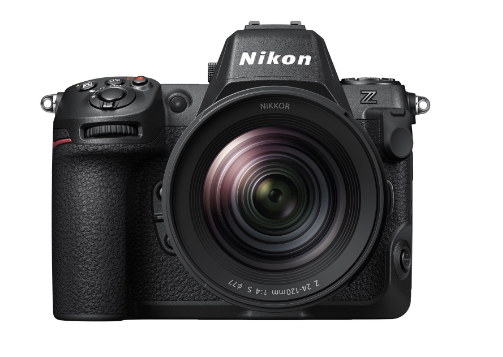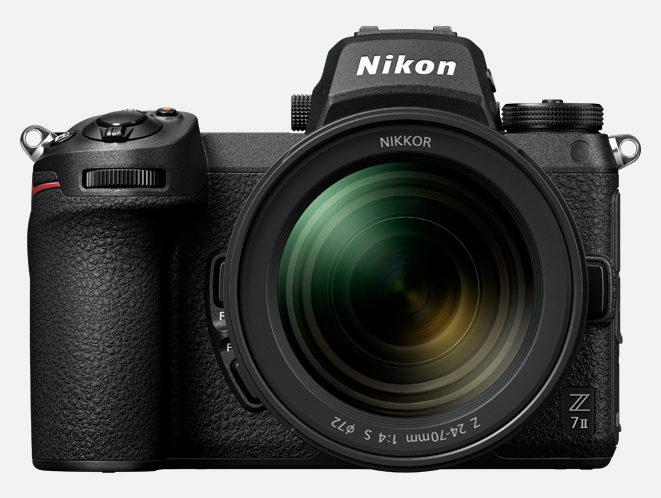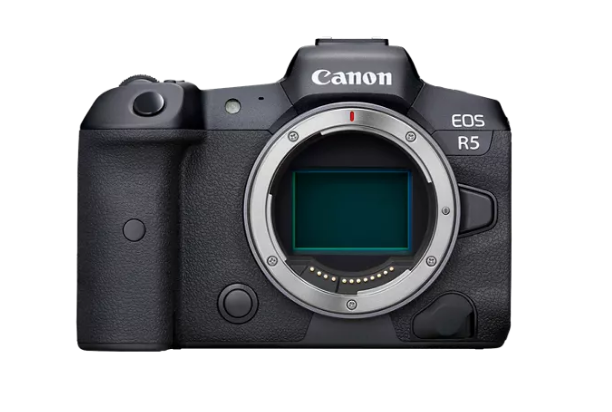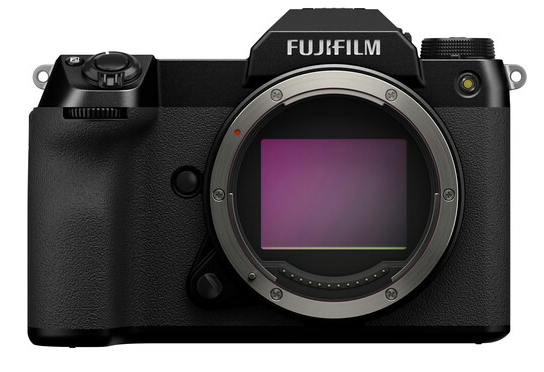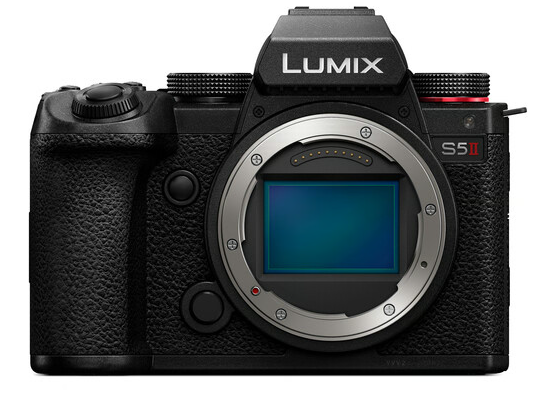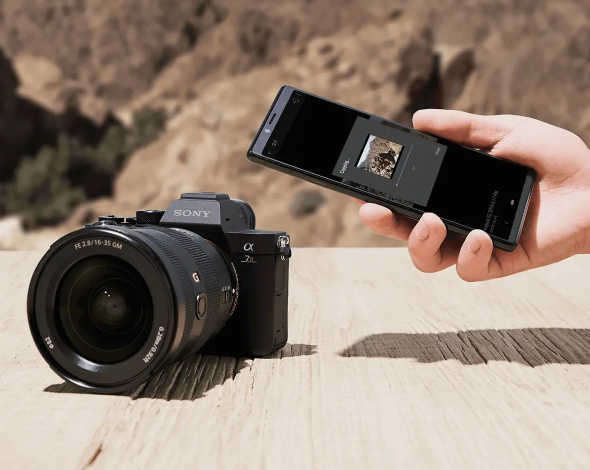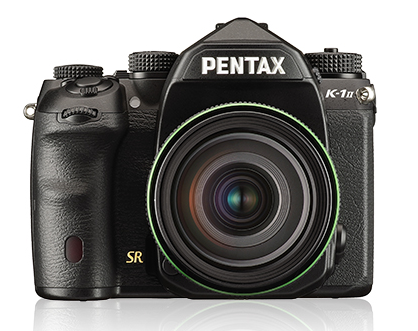The 7 Best Cameras for Landscape Photography in 2024
Monday 29 April 2024
 5.8k
5.8k
 Reproduction without the author's authorization is prohibited
Reproduction without the author's authorization is prohibited
Landscape photography is an art that allows us to capture the majesty of nature, the vastness of the sea, and the grandeur of mountains. But to truly do justice to these scenes, a photographer needs the right equipment. In 2024, the technology has advanced, and the market is brimming with cameras that claim to be the best for landscape photography. However, only a few stand out for their exceptional quality, features, and reliability. Here, we present the seven best cameras for landscape photography in 2024, each with its unique strengths.
What Features Do Landscape Photography Cameras Need?
There are some differences in camera preferences between Landscape Photography and Portrait Photography.It’s also different from wildlife photography. You may have seen this opinion from experienced photographers or on forums: Canon is suitable for portrait photography, and Nikon is suitable for landscape photography. However, in fact, no camera company will limit its usage scenarios. Every brand of camera has the ability to take landscape photography, as long as they meet the following points:
Large Sensor Size: A larger sensor captures more light and details, which is crucial for landscape shots.
High Dynamic Range: To handle the varied lighting in landscapes, from the darkest shadows to the brightest highlights.
Weather Sealing: Durability against the elements is key when shooting in the great outdoors.
High Resolution: For capturing the intricate details of nature and allowing for large prints.
Good Battery Life: Long shooting sessions without the need for frequent battery changes.
Lightweight and Portable: Easy to carry on long treks without adding too much burden.
Although we have given many examples of features that are important for Landscape Photography, please remember that camera manufacturers are under cost control and technology limitations, and there is no perfect Landscape Photography camera. All a photographer can do is choose the camera that suits them best.
Nikon Z8: Flagship DNA Landscape Camera
The Nikon Z8 is a highly anticipated full-frame mirrorless camera that has garnered attention for its impressive specifications and features.
Sensor: It boasts a 45.7MP Stacked CMOS sensor, which is the same sensor used in the high-end Z9 sports camera.
Speed: The camera can shoot up to 20fps with Raw and 30fps with full-sized JPEG. It also has a pre-burst capture in JPEG modes, allowing up to 120fps for 11MP crops.
Autofocus: It features subject recognition AF and 3D Tracking for precise focusing.
Stabilization: The Z8 includes Synchro VR, combining in-body and in-lens stabilization, rated at up to 6EV.
Video: For videographers, it offers 8K/60p video in N-Raw and 4.1K in ProRes Raw. Additionally, it can shoot 8K/30p or up to 4K/60p from 8K.
Build: The camera has a 3.68M dot EVF and a 2.1M dot screen on a two-way hinge. It also includes one CFexpress Type B slot and one UHS II SD slot, along with dual USB-C ports.
The Nikon Z8 is designed to be a versatile camera suitable for both photography and videography, offering a range of features that cater to professionals and enthusiasts alike. It’s positioned as a smaller, lighter, and slightly more affordable alternative to the Z9, making it accessible to a broader range of users. The camera hit the market in late May 2023, with a launch price of around $3999.
Nikon Z7 II: The Choice You Can’t Go Wrong With
The Nikon Z7 II is a sophisticated full-frame mirrorless camera that builds upon the success of its predecessor, the original Z7.
Sensor: It features a 45.7MP BSI-CMOS sensor with a native ISO range of 64-25,600, expandable to 32-102,400, ensuring high-resolution images with excellent dynamic range.
Image Processing: The camera is powered by dual EXPEED 6 image processors, which provide faster image processing, improved autofocus performance, and greater buffer capacity for continuous shooting.
Autofocus: It comes with an advanced autofocus system that includes Eye-Detection AF and Animal-Detection AF, making it highly capable for portrait and wildlife photography.
Continuous Shooting: The Z7 II can shoot at up to 10 fps with single-point AF, which is beneficial for capturing action shots.
Video Capabilities: It supports 4K/60p video recording with a slight crop, offering filmmakers high-resolution video capture.
Stabilization: The camera incorporates 5-axis in-body image stabilization, which compensates for camera shake and allows for sharper images when shooting handheld.
Build and Design: The Z7 II maintains the robust build quality of the Z series, with a 3.69M-dot EVF and a 3.2" 2.1M-dot tilting touchscreen. It also has weather-sealing for shooting in challenging conditions.
Storage: For storage, it provides dual card slots, one for CFExpress / XQD cards and another for UHS-II SD cards, offering flexibility and reliability for professional use.
Battery Life: The camera uses the new EN-EL15c battery, which is CIPA rated to 420 shots when using the LCD and 360 shots with the EVF.
Accessories: It is compatible with the new MB-N11 battery grip with vertical controls, which is useful for portrait orientation shooting and extends the battery life.
The Nikon Z7 II is positioned as a high-resolution model in Nikon’s mirrorless lineup, aimed at photographers who prioritize image quality and versatility. It’s suitable for a wide range of photography genres, from landscapes and portraits to wildlife and events. The camera was well-received for its improvements over the original Z7, offering a more refined user experience and performance enhancements.
Canon EOS R5: Canon’s Best Landscape Camera
The Canon EOS R5 is a groundbreaking full-frame mirrorless camera that has set new standards in the photography and videography industry.
Sensor: It is equipped with a 45MP full-frame Dual Pixel CMOS sensor, providing high-resolution images suitable for large prints and detailed cropping.
Image Processor: The EOS R5 operates with the DIGIC X Image Processor, which enhances operational speed, image quality, and overall camera performance.
Autofocus: It features an advanced Dual Pixel CMOS AF II system with 1,053 AF areas and deep learning technology for improved subject tracking of people and animals.
Continuous Shooting: The camera offers high-speed continuous shooting of up to 12 fps with a mechanical shutter and up to 20 fps with an electronic shutter, making it ideal for capturing fast-moving subjects.
Video Capabilities: Remarkably, it can record 8K RAW video and up to 4K/120p, providing filmmakers with unprecedented resolution and quality.
Stabilization: The EOS R5 includes an in-body image stabilizer that can provide up to 8 stops of shake correction, greatly enhancing handheld shooting capabilities.
Viewfinder and Screen: It boasts a built-in 0.5” 5.76 million-dot OLED EVF with a 120fps refresh rate and a 3.2" 2.1M-dot fully articulating touchscreen, offering flexibility and clarity for composition and review.
Storage: For storage, it has dual card slots for CFexpress and UHS-II SD memory cards, accommodating the high data rates of 8K video and rapid burst shooting.
Connectivity: The camera is equipped with 2.4/5Ghz Wi-Fi and Bluetooth technology, enhancing file transfer and remote camera control capabilities.
Build: The EOS R5 is designed with impressive durability and weather-sealing comparable to the EOS 5D Mark IV, making it reliable in various shooting environments.
Battery Life: It uses a LP-E6NH battery, which is CIPA rated to around 320 shots when using the EVF.
The Canon EOS R5 has been praised for its high-resolution sensor, robust autofocus system, and powerful video capabilities, making it a top choice for professional photographers and videographers looking for a versatile and high-performing camera.
Fujifilm GFX100s: The Medium Format
The Fujifilm GFX100S is a medium format mirrorless camera that stands out for its large 102MP BSI CMOS sensor and compact body design.
Sensor: The GFX100S boasts a 102MP BSI-CMOS 44 x 33mm medium format sensor, delivering exceptional image quality with a high level of detail.
Image Stabilization: It features an image stabilization system rated at up to 6EV, allowing for sharper images when shooting handheld.
Continuous Shooting: The camera offers continuous shooting at up to 5 fps with C-AF, suitable for capturing movement in high resolution.
Video: For videographers, the GFX100S provides 4K video at up to 30p, with HDMI output of 10-bit 4:2:2 or 12-bit Raw footage.
Multi-Shot Mode: It includes a multi-shot 400MP mode for static subjects, which combines multiple images to create a single high-resolution photo.
Display: The camera has a 2.36M-dot rear touchscreen with two-axis tilt and a fixed 3.69M-dot OLED EVF with 0.77x equivalent magnification.
Raw File Options: Users can choose between lossy, lossless, or uncompressed Raw in 16 or 14-bit, providing flexibility in post-processing.
Storage: It is equipped with twin UHS-II SD card slots, ensuring ample storage for large files.
Battery: The GFX100S uses an NP-W235 battery, rated at 460 shots, offering substantial shooting time for extended sessions.
Design: Despite its high-capacity battery and large sensor, the GFX100S maintains a smaller and more portable body compared to its predecessors.
The GFX100S is designed to deliver outstanding features at a competitive price, making it an ambitious model that appeals to both professional photographers and enthusiasts looking for premium-quality processing performance and portability.
Panasonic Lumix DC-S5II: Affordable Flagship Landscape Camera
The Panasonic Lumix DC-S5II is a mid-range full-frame mirrorless camera that’s designed for both still photography and video recording.
Sensor: It boasts a 24MP BSI CMOS sensor with on-sensor phase detection, which is a new addition to Panasonic’s camera technology.
Autofocus: The phase detection autofocus system provides fast and accurate focusing, which is particularly beneficial for video mode as it allows the camera to refocus smoothly without overshooting.
Burst Shooting: You can shoot at up to 30fps with the electronic shutter, continuous autofocus, and raw capture.
High-Resolution Mode: It includes a 96MP multi-shot high-resolution mode for detailed images.
Video Capabilities: The camera can capture 6K 3:2 open-gate video up to 30p (4:2:0 10-bit) and DCI/UHD 4K from the full sensor width up to 30p. It also supports DCI/UHD 4K up to 60p (Super 35mm), with unlimited record times and a proxy option.
Dual Native ISO: It features a dual conversion gain sensor with an explicit ‘Dual Native ISO’ gain selection, which helps in achieving better image quality in various lighting conditions.
Cooling System: An integrated cooling fan ensures that the camera can handle long recording sessions without overheating.
Storage: The camera is equipped with twin UHS-II card slots for ample storage and fast read/write speeds.
Connectivity: It offers Camera-to-Cloud integration with Frame.io, enhancing workflow for professionals.
Build Quality: The chassis is made of magnesium, providing dust and splash protection.
Stabilization: It includes a 5-axis sensor stabilization system to reduce camera shake and enable smoother footage.
Price: The S5II has a recommended price of $1999 (€2199), while the S5IIX variant, which includes more extensive video features, is priced at $2199 (€2499). There’s also an optional paid upgrade for the S5II that adds Raw video output for $200/€200.
This camera is a significant update from its predecessor, the DC-S5, and is aimed at enthusiasts and professionals who need a reliable camera for both high-quality stills and advanced video recording. The addition of phase detection autofocus and the improved video capabilities make it a competitive option in the market.
Sony Alpha 7R IV: Extremely High Pixel Full-Frame
The Sony Alpha 7R IV is a high-resolution full-frame mirrorless camera that stands out in the market for its impressive image quality and performance.
Sensor: It features a 61.0MP full-frame back-illuminated Exmor R™ CMOS sensor that delivers unprecedented resolution, fine gradation, and low noise, capturing the mood and texture of subjects.
Image Processing: The camera is equipped with the latest BIONZ X™ imaging engine and front-end LSI, which work together to maximize the high-resolution sensor’s performance and achieve up to 15-stops of dynamic range at low ISO sensitivity
ISO Range: It offers a wide standard ISO range of 100-32000, ensuring high-quality imagery even with increased pixel count.
Image Stabilization: The in-body 5-axis image stabilizer is optimized to maximize the 61.0-megapixel sensor’s performance, supporting handheld shooting as effectively as 5.5-stop higher shutter speed.
Shooting Speed: Despite its high resolution, the Alpha 7R IV can shoot at up to 10 frames per second with full autofocus.
Video Capabilities: It can shoot 4K video either from the full width of its sensor or from an APS-C/Super 35 crop.
Build Quality: The camera promises robust build quality and refined controls suitable for professional use.
Sensor: It is equipped with a 36.4 Megapixel full-frame CMOS sensor, which allows for high-resolution imaging and detailed photographs.
High ISO Sensitivity: The camera offers an impressive high ISO sensitivity up to ISO 819,200 for stills and ISO 25,600 for video, supported by the PRIME IV processor and the RICOH developed Accelerator Unit, which significantly reduces noise.
Pixel Shift Resolution: The K-1 Mark II features a Pixel Shift Resolution System that captures four images of the same scene by shifting the image sensor by a single pixel for each image, then synthesizes them into a single composite image. This system delivers super-high-resolution images that surpass the sensor’s nominal resolution.
Astrotracer: Unique to Pentax, this feature simplifies the process of astrophotography by using the built-in GPS module to calculate the movement of stars and planets. The sensor shifts during exposure to compensate for the earth’s rotation, reducing star trails in long exposures.
Build Quality: The camera is supremely weather-sealed and tough-built, making it suitable for use in harsh environments.
Image Stabilization: It incorporates a 5-axis sensor-shift image stabilization system, which helps to minimize the appearance of camera shake for sharper handheld shooting.
Autofocus: The K-1 Mark II has a 33-point AF system with 25 cross-type points, and improvements have been made to its AF Tracking algorithm.
Burst Speed: It has a maximum burst speed of 4.4fps, which can be useful for capturing action shots.
Tripod: A sturdy tripod is essential for stability, especially when shooting in low light or using slow shutter speeds to capture motion in the landscape.
Filters: Various filters such as polarizing filters, neutral density filters, and graduated neutral density filters can help manage light conditions and enhance colors.
Camera Bag: A durable and comfortable camera bag is crucial for protecting your gear and carrying it through different terrains.
The Sony Alpha 7R IV is designed for professional photographers who demand high resolution and detailed imagery, making it a powerful tool for various photography genres. Its advanced features and capabilities make it a significant choice for those looking to capture images with clarity and precision.
Pentax K-1 Mark II: Best Affordable Camera For Landscape Photography
The Pentax K-1 Mark II is a robust full-frame DSLR camera known for its high-resolution imaging and unique features tailored for landscape and adventure photography. Here’s a detailed overview of its key specifications:
The Pentax K-1 Mark II stands out for its unique features like the Astrotracer and Pixel Shift Resolution, which are particularly appealing for photographers specializing in landscapes and night skies. Its rugged build and high ISO performance also make it a reliable choice for those shooting in challenging conditions.
What Kind of Camera Is Not Suitable for Landscape Photography?
While the above cameras are excellent for landscape photography, certain types of cameras are less suitable for this genre. Cameras with small sensors, limited dynamic range, poor weather sealing, and low resolution may not perform well in capturing the breadth and detail of landscapes. Additionally, cameras that are heavy and cumbersome can be impractical for photographers who need to travel light.
In conclusion, the best camera for landscape photography is one that combines high resolution, dynamic range, portability, and durability. The seven cameras listed above are all excellent choices that cater to a range of needs and budgets, ensuring that every landscape photographer can find the perfect tool to capture the beauty of the natural world.
What accessories are important for landscape photography
For landscape photography, certain accessories can greatly enhance the quality of your images and the overall shooting experience. Here are some important accessories to consider:
These accessories can make a significant difference in your landscape photography, helping you to capture stunning images with greater ease and efficiency. Remember, the best equipment is the one you’re willing to carry with you, so choose accessories that fit your specific needs and shooting style.
Statement: all contents and remarks made by K&F CONCEPT 's intranet friends only represent themselves and do not reflect any K&F CONCEPT 's opinions and views.
-
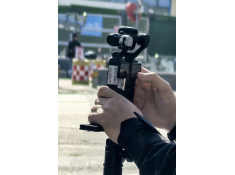 DJI Pocket 4 Test Photos LeakedThursday 11 December 2025
DJI Pocket 4 Test Photos LeakedThursday 11 December 2025 -
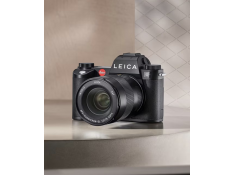 Leica to Release New SL Camera Based on Panasonic S1RIIThursday 11 December 2025
Leica to Release New SL Camera Based on Panasonic S1RIIThursday 11 December 2025 -
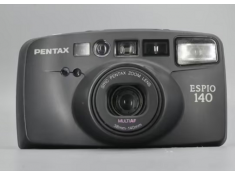 Is Pentax about to release ESPIO140? Press release leakedTuesday 09 December 2025
Is Pentax about to release ESPIO140? Press release leakedTuesday 09 December 2025 -
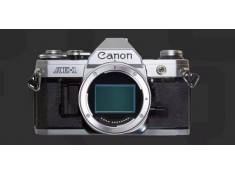 Canon's "Retro" Camera is Coming – Featuring a 32.5MP SensorMonday 08 December 2025
Canon's "Retro" Camera is Coming – Featuring a 32.5MP SensorMonday 08 December 2025 -
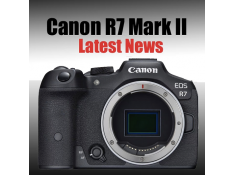 Canon Applies for WiFi 6 Certification. R5CⅡ and R7Ⅱ?Thursday 04 December 2025
Canon Applies for WiFi 6 Certification. R5CⅡ and R7Ⅱ?Thursday 04 December 2025


